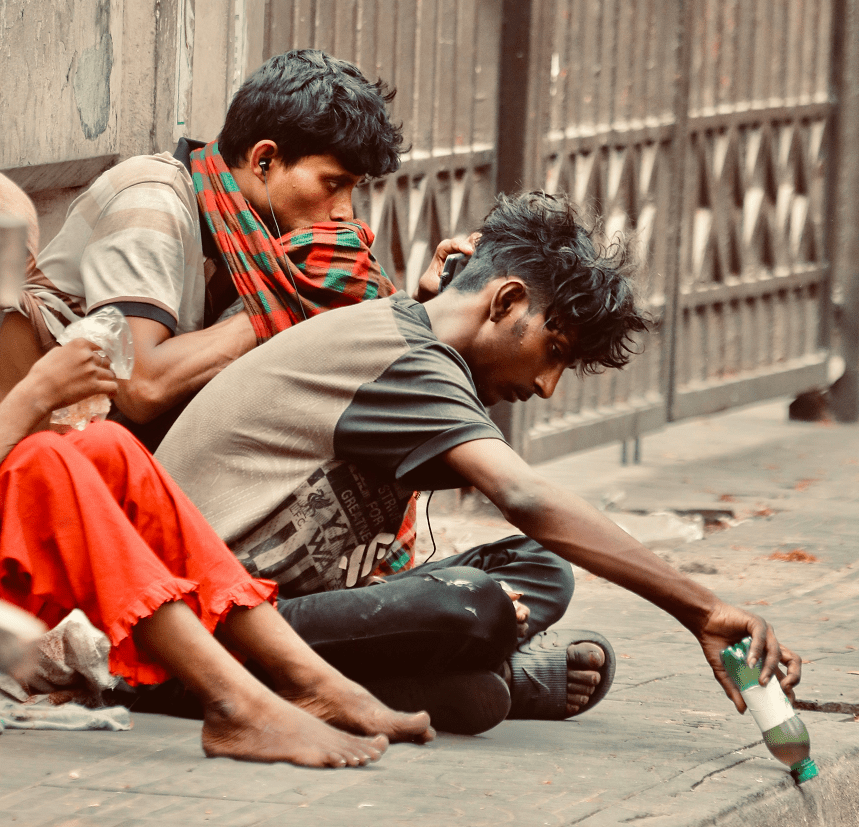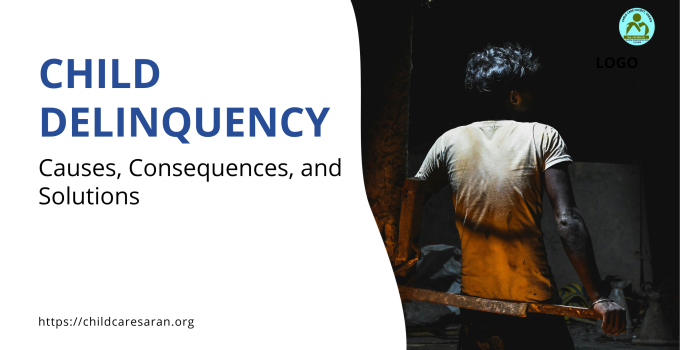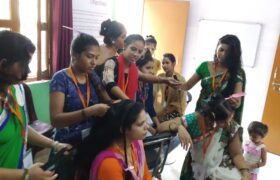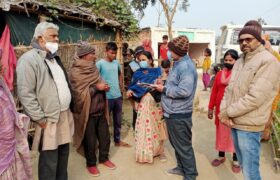Indian child delinquency is an issue that requires urgent address and intensive comprehension. While cultural values shift and urbanisation increases, determinants driving young people to delinquent behaviours have grown increasingly complex. Through this blog, the multifarious causes influencing child delinquency-covering socio-economic determinants and home background to peer influence and exposure to adverse influence-are discussed. By considering the extreme consequences of such behaviour, both for society and for the offenders themselves, we can make informed decisions about effective solutions to the prevention and treatment of young people’s crime.
Let us look in-depth at this significant topic in an effort to build more awareness and collaborative efforts towards a safer, more supportive community for our young people.
Childhood is a ground for building one’s own future. However, for the majority of Indian children, their childhood is tainted with trauma, neglect, poverty, and exploitation. All these conditions usually push them towards anti-law behaviours, a social challenge known as child delinquency. Child delinquency in India is not just a matter of law, but it is an indication of systemic social and economic inequalities. Understanding the reasons why children engage in criminal activities is the solution to addressing the fundamentals and shaping a more equitable society.
Overview of Child Delinquency in India

Definition of Child Delinquency
Child delinquency is defined as illegal, antisocial, or harmful acts committed by persons under the age of 18 years. Such acts include theft, physical harm, use of drugs, destruction of property, absence from school, cybercrimes, and involvement in organised crime. In India, juvenile crime is covered by the Juvenile Justice (Care and Protection of Children) Act, 2015, which is based on reform and rehabilitation and not punishment.
The figures for Child Delinquency in India tell a troubling, if incomplete, story. The National Crime Records Bureau (NCRB) reports that thousands of children are arrested every year. The most common offences reported are theft, burglary, and assault. These official statistics are probably only the tip of the iceberg, however, since many cases go unreported or are resolved informally.
One of the concerning trends is the growing use of children in organised crime, at times as pawns for older criminals who take advantage of the legal favour accorded to juveniles. In addition, there is a visible link between delinquency and urbanisation, with fast-growing cities tending to lack appropriate social safety nets for vulnerable children.
Significance of Child Delinquency in Indian Society
Neglecting child delinquency has grave implications for the nation’s future. With each child entering the criminal justice system, there is a loss of potential—a potential doctor, engineer, artist, or good citizen. It is not merely a law-and-order issue; it is an issue of social justice, child rights, and nation-building. A society is judged by how it treats its most vulnerable, and our approach to children in conflict with the law is a definitive test of our humanity and progress.
Causes of Child Delinquency
The roots of delinquent behaviour are seldom found in a single cause but in a tangled web of interconnected factors:
Socio-economic Factors
1. Poverty and its Consequences: Poverty is the biggest motivator of **Child Delinquency in India**. When parents lack money for basic needs, children are compelled to work and help earn the money, leading them towards child labour, street hawking, and, ultimately, petty offences. Hunger and destitution may make it seem like the only choice is theft. Poverty also deprives children of a secure and caring environment, where they are exposed to high-risk behaviours.
2. Family Structure and Dynamics: The family is the chief agent of socialisation, and its disintegration is a powerful explanation of delinquency. Broken homes, domestic violence against them, and alcoholic or abusive parents are highly risky to their children. Parental neglect, overpunishment, or lack of emotional attachment can motivate the child to find acceptance and validation in negative peer groups.
3. Access to Education and Resources: Education has a proven capacity to be a deterrent to delinquent behaviour. Yet, for millions of Indian children, school is an out-of-reach luxury. School dropout, usually in response to economic constraints or a lack of interest generated by poor-quality education, leaves children with huge amounts of unstructured time and few future possibilities, with the result that they are easy prey for delinquency.
Psychological Factors
1. Mental Health Problems: Frequently underemphasized in the Indian situation, untreated and undiagnosed mental health problems, such as conduct disorder, depression, anxiety, and PTSD, may present themselves as aggressive or antisocial behaviour. Lacking counselling or psychiatric intervention, these children externalise their inner conflicts in what society perceives as delinquency.
2. Role of Peer Pressure: The urge for acceptance and identity is extremely strong at this age. Vulnerable children, particularly those with weak family bonds, usually fall prey to peer pressure and engage in doing wrong things to win approval or escape mockery from their peer group.
3. Traumatic Experiences and their Effects: Those who have had traumatic experiences—whether they are sexual abuse, physical abuse, or the loss of a parent—tend to harbour deep-seated anger, fear, and confusion. Delinquency can then serve as a maladaptive coping strategy, a means of communicating pain or reasserting control over a life that has no order.
Environmental Factors
1. Crime and Community Violence: Experiencing life in a slum or neighbourhood where crime, drug abuse, and violence are common makes the same behaviour acceptable for a child. If crime is an everyday feature, it is no longer a moral offence but a means of survival.
2. Media Exposure and Influence on Harmful Content: Unchecked viewing of violent movies, video games, and web content may desensitise kids to violence and promote criminal ways of life. The age of the internet has also brought forth new types of delinquency in the form of cyberbullying and internet fraud.
3. Absence of Positive Role Models: Without strong role models in the family or community, children might turn to local gangs or criminals who portray power and success. The lack of a mentor to provide empathy, ethics, and ambition can create a moral vacuum.
Effects of Child Delinquency
The repercussions of a child’s delinquent behaviour resonate far beyond the immediate legal difficulty.
Impact on the Individual
1. Mental and Emotional Health Ramifications: The process of being arrested, processing through the justice system, and being institutionalised can be very traumatic. It tends to result in stigma, low self-esteem, depression, and a reaffirmation of one’s self-image as a “criminal,” which makes rehabilitation challenging.
2. Educational Delays and Future Prospects: Contact with the law always goes against education. The record of criminal activity (although usually guarded for minors) can serve to put up barriers that are impossible to see, denying future job prospects and forcing the person back into crime to survive.
Impacts on Family
1. Strain on Family Relationships: The incident can lead to tremendous shame, guilt, and blame in the family. Parents get ostracised by society, and siblings get bullied, resulting in family disintegration.
2. Financial Implications for Families: Legal fights, penalties, and loss of a potential earning hand can drive already impoverished families further into poverty.
Societal Consequences
1. Growing Crime Rates and Public Safety Threats: Untreated juvenile delinquency is a pipeline to adult crime. Without intervention, a child with minor crime can advance to serious crime, leading to a continuous cycle of violence and insecurity.
2. Economic Burden to the Justice System: Handling juvenile cases, having observation homes, and operating rehabilitation programs put an enormous financial burden on state resources. Prevention is much cheaper than dealing with the after-effects.
Prevention and Intervention Strategies
Addressing **Child Delinquency in India** demands a many-faceted, empathetic, and long-term effort.
Role of Education
1. Importance of Accessible and Quality Education: The government and NGOs must work in tandem to ensure that every child has access to not just schooling, but engaging, quality education. This includes vocational training that can lead to tangible employment opportunities.
2. Social and Emotional Learning (SEL) Programs: Curriculum should include SEL to enable children to develop empathy, self-regulate emotions, establish healthy relationships, and exercise responsible decision-making. This instils strength against bad peer influences and unhealthy environments.
Community Involvement
1. Creating Safe and Nurturing Environments: Children must have safe places in communities to go, such as parks, libraries, and community centres with organised activities such as sports, arts, and mentoring programs. This is a healthy alternative to the street.
2. Involvement of Local Organisations and NGOs: Local organisations are most suited to detect vulnerable children and act early. Their community mobilisation, counselling, and education support work is priceless and requires more funding and acclaim.
Legal Framework and Policy Recommendations
1. Strengthening Juvenile Justice Legislation: Although the JJ Act 2015 Amendment 2021 is a revolutionary law, it is implemented in a non-homogeneous manner. There is a necessity for improved training of the Special Juvenile Police Units (SJPU), greater child-friendly courts, and quicker disposal of cases in order to avoid children’s placement in observation homes.
2. Setting Up Rehabilitative Instead of Punitive Action: The guiding principle cannot be punitive in nature. It has to be rehabilitation and reintegration. This implies effective individual care plans, access to counselling from psychologists, life skills training, and family counselling, so the issues driving the child’s behaviour are addressed.
Successful Case Studies and Programs
Hope is not lost; it is being actively nurtured by various programs all over India.
Overview of Effective Intervention Programs in India
Organisations such as Butterflies, Salaam Baalak Trust, Child Care Society, Saran and Udayan Care have made path-breaking contributions. Butterflies, for example, engages with street and working children, and employs an innovative child participation model in which children participate in decision-making processes concerning them. Their education, health, and legal literacy programmes have been able to keep innumerable children from falling into a criminal lifestyle.
Success Stories of Rehabilitation and Reintegration
Take the case of Rohan (name changed), a 15-year-old arrested for a string of chain snatchings in Delhi. Rather than being sent to an observation home, he was referred to a restorative justice program conducted by an NGO. After counselling, it emerged that he was acting at the behest of a local gang and required money to fund his mother’s medical treatment. The program offered his family financial support, admitted him into a vocational training program for mobile phone repair, and gave him a mentor. Rohan now operates a small kiosk repair business for mobiles and is the lone breadwinner in his family, having totally shed his past.
Lessons Learned and Best Practices
The most important lessons from such triumphs are evident:
- Intervention at an Early Stage is Essential: Detection and intervention of children at risk before they offend is most effective.
- In-Depth Intervention: Psychological, educational, and family issues of the child must be addressed.
- Models Led by the Community: Models initiated and facilitated within and by the local community are more effective and sustainable.
- The Child’s Voice Matters: Successful rehabilitation involves listening to the child and respecting their perspective.
Conclusion
Indian Child Delinquency is a reflection of greater social failures. It is a reflection of our joint failures to give each child a safe, just, and loving environment. To just punish the child is to totally miss the point. We need to see beyond the behaviour to the crying need behind.
The call to action is to all. Policymakers need to build stronger systems and ensure the effective implementation of child-sensitive laws. Communities need to lose their stigma and accept an active role in raising their children. Families, where feasible, need to be empowered and assisted to create a loving and stable base. And as a society, we need to create a nurturing environment—one that provides a second chance, has faith in redemption, and recognises that each child, however lost, holds a spark of potential that can be re-ignited. The destiny of these children, and the very moral integrity of our country, hangs in the balance of the decisions we make today.






